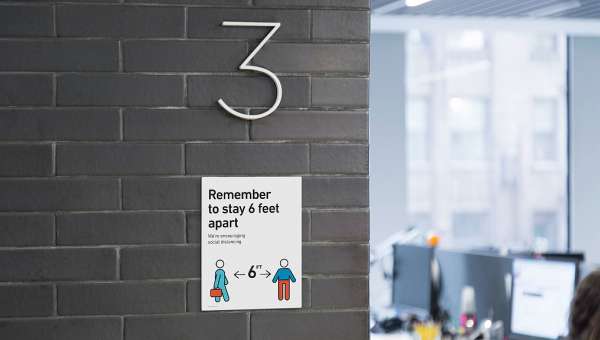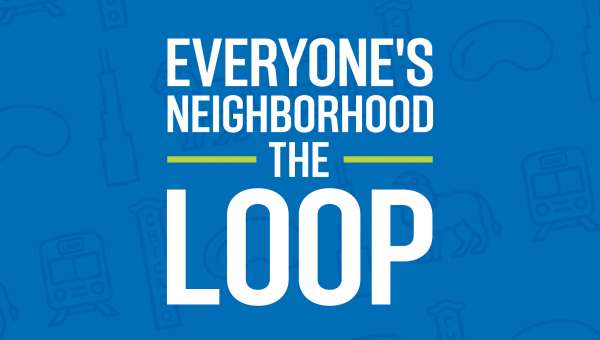Posted 4 years ago in Trending, Guest Blog by Ira Bodenstein and David R. Doyle of Cozen O'Connor
10 MIN READ - Restrictions to slow the spread of COVID-19 in Chicago are loosening, but reopening businesses won’t be as simple as switching on the lights and welcoming employees back to their desks. Not only do businesses need to create a safe work environment, but they must also navigate the practical and legal implications of bringing employees back to the workplace. Fox Rothschild LLP – Chicago shares some important considerations employers should make as they reopen.
Return-to-Work Plan
As employers contemplate reopening their businesses under Phase 4 of the city’s reopening framework, human resource experts recommend creating a “return-to-work plan.” This can help relieve employee anxiety about returning to the workplace by setting clear rules and expectations for both employer and employee. Suggestions for a return-to-work plan include:
- Providing clear dates for when employees are to return to work whenever possible. Depending on the size of the company, and whether the business can re-open to full capacity, the employer might consider a phased ramp-up.
- Addressing whether work-from-home is possible for some employees, or whether in-person attendance is an essential job function, using non-discriminatory criteria.
- Depending on the size of the company, explaining how employees will communicate their intent to return to work.
- Indicating any special accommodations to be provided for personnel who are members of a vulnerable population.
- Detailing the employer’s risk infection protocol (discussed below) or general efforts to minimize the risk of transmitting COVID-19 in the workplace.

Obligations to Provide Paid or Unpaid Leave as Result of COVID-19
Employees may have ongoing needs for COVID-19-related sick or family leave in the coming months, as public health officials forecast a potential second wave of COVID-19 transmissions in the fall. Employers have continued obligations to provide paid or unpaid sick leave to employees for certain COVID-19 related reasons, even if employees exhaust paid sick leave for personal reasons.
Employers with 500 or fewer employees that are subject to the Families First Coronavirus Response Act (FFCRA) are required to provide employees with paid sick time for qualifying reasons related to the COVID-19 outbreak. Because paid leave under the FFCRA is in addition to other paid time off or sick leave provided by an employer’s policies, employers will still need to provide eligible employees with paid sick leave under the FFCRA even if they have otherwise exhausted their PTO or sick leave for other reasons. The U.S. Department of Labor has published a list of FAQ’s providing guidance on compliance with the FFCRA.
Wage & Hour Implications on Changing Work Arrangements
As many business are restricted from operating at full capacity during Phase 4, employers may consider bringing employees back in limited capacities, or continuing certain work-from-home or flexible scheduling arrangements. While these types of creative arrangements can be a great way of getting employees back to work, they carry wage and hour implications.
For instance, in accordance with reopening orders, employers may consider allowing some employees to return to the physical workplace to perform limited tasks but to continue performing administrative tasks from home. Employers should keep in mind the general principle that exempt employees are to be paid for the entire workweek during which they perform any amount of work, unless a specific deduction applies. Therefore, even if there is only a limited amount of work for exempt employees to perform upon their return, employers should be careful not to deduct exempt employee pay.
On the other hand, be sure to clearly communicate with nonexempt, hourly employees about the hours they are expected to work, and provide a way for them to track the work remotely, including breaks and overtime, to ensure employees are properly paid.
Decisions to restructure your workforce can also present misclassification issues. The Fair Labor Standards Act (FLSA) provides an exemption from its minimum wage and overtime requirements for certain employees. To qualify for an exemption, employees must meet certain tests regarding their job duties and be paid on a salary basis not below the FLSA salary threshold (which is currently $684 per week).
Employers considering restructuring certain positions as a result of COVID-19 (such as requiring employees to take on additional job duties or cross-training employees in different tasks or jobs) should review any restructured positions to ensure they are properly classified as exempt or nonexempt. Spending some additional time to ensure employee positions are properly classified can avoid potential costly wage and hour litigation down the road.
In addition, employers need to comply with the recently enacted City of Chicago Fair Workweek Ordinance, which requires employers to provide workers a written estimate of days and hours of work prior to or upon employment and to post work schedules at least 10 days in advance. A fully copy of the ordinance is available here.

Creating a Safe Workplace
Employers must provide face coverings to employees where 6-foot social distancing is not possible. However, employers are not currently required to conduct temperature checks.
Employers should follow guidance on workplace safety published by the City of Chicago tailored to their specific industries. In addition, employers should consider establishing an “Infection Control Protocol,” as recommended by OSHA and the City of Chicago. The protocol is essentially a plan for reducing the risk of transmitting COVID-19 in the workplace through implementing various measures based on guidance from the Center for Disease Control and Prevention (CDC), Occupational Safety and Health Administration (OSHA) and the City of Chicago. Employers should train their employees and supervisors on the protocol.
Below is a list of key areas employers should consider including in the protocol:
- A daily health assessment or screening;
- Employee health and wellness checks, including temperature checks, and a protocol for responding to employees diagnosed with COVID-19, who are experiencing symptoms consistent with COVID-19 or who have been exposed to a person with COVID-19 or similar symptoms;
- Social distancing measures, including requirements that employees remain six feet apart in the workplace, staggered shifts to avoid overcrowded work areas and options for conducting work and meetings remotely;
- Wearing certain personal protective equipment (PPE) in accordance with the employer’s industry and the job duties of the employee, as well as considerations regarding whether face coverings or masks should be worn and in what circumstances;
- Whether and in what circumstances non-employees such as customers or other visitors can visit the workplace;
- Restrictions on non-essential business travel and a requirement that employees report any personal travel to high-risk countries or areas in order to determine quarantine requirements;
- Enhanced cleaning and sanitation measures as recommended by the CDC;
and - Recommended hygiene practices for employees in the workplace based on CDC guidance.
The City of Chicago also recommends requiring employees to complete a self-screening questionnaire before returning to work.
- Have you had a body temperature over 100 degrees Fahrenheit or have you used a fever reducer in the previous 24 hours to treat a body temperature over 100 degrees Fahrenheit?
- Do you have a new cough that you cannot attribute to another health condition?
- Do you have a new or worsening sore throat that you cannot attribute to another health condition?
- Do you have new shortness of breath that you cannot attribute to another health condition?
- Have you recently developed a complete loss of smell or taste?

Employers may implement a daily screening procedure – including temperature check – without exposing themselves to exposure under the Americans with Disabilities Act (ADA), so long as the screening is based on guidance from the CDC. Employers should notify employees in advance of any screening to avoid surprises. If the screening process includes a temperature check, the employer should use a touchless thermometer/scanner, conduct the scan in a private location, and follow the CDC’s temperature cutoff of 100.4 ℉. All screening must be implemented on a nondiscriminatory basis, and information obtained must be kept confidential, including the identity of employees who may be exhibiting a fever or other symptoms. Information should only be shared with members of the company management that need to know.
For employees who have tested positive for COVID-19, or have been exposed to an individual with COVID-19, the protocol should follow the CDC’s guidance to determine when to permit the employee to return to work. The CDC has issued interim guidance on when to discontinue isolation for persons with COVID-19 outside of health care settings. This guidance identifies two strategies, depending on the availability of and access to testing supplies.
First, the time-since-illness-onset and time-since-recovery strategy for releasing persons with COVID-19 with symptoms from isolation (non-test-based strategy) requires:
- At least three days (72 hours) have passed since recovery, which is defined as resolution of fever without the use of fever reducing medications.
and - Improvement in respiratory symptoms (e.g., cough, shortness of breath)
and - At least seven days have passed since symptoms first appeared.
Second, the testing-based strategy for those who have COVID-19 with symptoms requires:
- Resolution of fever without the use of fever-reducing medications
and - Improvement in respiratory symptoms (e.g., cough, shortness of breath)
and - Two consecutive negative results from FDA-authorized nasal swab tests – at least 24 hours apart.
Employees with laboratory-confirmed COVID-19 who have not had any symptoms may discontinue isolation when at least seven days have passed since the date of their first positive COVID-19 diagnostic test and they have had no subsequent illness, provided they remain asymptomatic.
Employers need to evaluate whether the criteria listed above provides sufficient protections for the return of COVID-19 employees, or whether additional protective measures are required. This should be done in compliance with the OSHA guidance on maintaining a safe workplace during the COVID-19 epidemic as well as the Regulations and guidance provided by the EEOC.
What if an Employee Refuses to Return to Work?
Otherwise healthy workers may refuse to return to work despite the employer’s best efforts to ensure a safe work environment. Employers should attempt to engage in an interactive and constructive dialog with the employee to determine the employee’s concerns about returning to work and if they can be alleviated. In addition, employees are entitled to a reasonable accommodation for conditions covered under the ADA. The EEOC has not stated that a COVID-19 infection is a disability under the ADA, but has encouraged employers to continue to accommodate employees with disabilities, if they are subject to an increased risk of COVID-19. Accommodations can include personal protective equipment (PPE), temporary modification of work schedules, temporary job restructuring, leaves of absence, or working remotely. Mental illness, which is a disability, can be exacerbated by the pandemic and may also necessitate accommodations. Employers may request that an employee obtain accommodation recommendations from their physician that will enable the employee to work. Employers are not required to provide accommodations that constitute an undue hardship. Additional information on pandemic-related workplace compliance guidance from the EEOC can be found here.
Finally, OSHA regulations permit an employee to refuse to return to work if the following criteria are met, and only after notifying the employer of the dangerous condition:
- The employee must reasonably believe they are in imminent danger.
- A reasonable person would agree that there is a real danger of death or serious injury.
and - Due to the urgency of the situation, there is insufficient time to eliminate the danger.
This “danger” cannot be a generalized fear and must be a real and identifiable condition. If employers are following the guidelines published by the CDC, it will be difficult for an employee to successfully argue they are in imminent danger.
Find more coronavirus resources from Fox Rothschild. Updated daily, the Coronavirus Response Resource Center provides links to free webinars, articles, and charts with practical guidance for leaders of companies of all sizes.

Disclaimer
The information provided in this article does not, and is not intended to, constitute legal advice; instead, all information, content, and materials available in this article are for general informational purposes only. Information in article may not constitute the most up-to-date legal or other information. Readers of this article should contact their attorney to obtain advice with respect to any particular legal matter.



